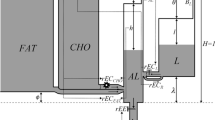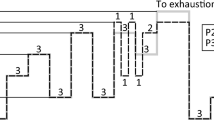Abstract
The study of physiological parameters dynamic is currently the main area of research in exercise physiology. The most common physiological data to collect include heart rate, oxygen saturation, core body and skin temperature, blood pressure, ECG, oxygen consumption and others. The data obtained are often related to various forms and intensities of physical activity, and in accordance with the principles of personalized medicine evaluated. Mathematical models are able to simulate some physiological parameters e.g. heart rate, oxygen consumption etc. during cycling exercise on bicycle ergometer or running exercise on treadmill. Workload intensity (in Watts) on bicycle ergometer and running velocity (in km/h) on the treadmill are taken as input for dynamic models. Determination of dynamic models of physiological parameters is fundamental for athletic training methodology, as well as evaluation of cardiorespiratory capacity and fitness. The present work demonstrates the application of dynamic systems models to the simulation of heart rate kinetics and oxygen consumption during workloads of time-varying intensity. Optimization of free model parameters could be used as important information about the health condition of the subject with special reference to the cardiorespiratory capacity and fitness age. The models could be used both for athletes as well as for untrained sedentary population.
Access provided by Autonomous University of Puebla. Download conference paper PDF
Similar content being viewed by others
Keywords
1 Introduction
For study of physiological parameters kinetics during exercise usually the treadmill or bicycle ergometers are used. Heart rate (HR), oxygen uptake (VO2), CO2 expenditure (VCO2), pulmonary ventilation (VE) and other parameters are continuously measured within test. The results are applied in training methodology and in many cases also for medical conclusions. Using physiological parameters obtained during any form of physical activity the dynamic models can be derived. Models are described by means set of nonlinear differential equations. Most relevant is dynamics of HR as a response to running velocity (on treadmill) or workload intensity (on cycle ergometer). It must be pointed out that besides of workload intensity there are other factors influencing HR, e.g.: ambient temperature and humidity, previous training and fatigue, over-training, altitude, medication, prodromal phase of infectious diseases, pre-start psychical state, mental activity, nutrition and others. \( \dot{V}O_{2} \) is defined as the volume of oxygen used per time unit to cover energy demands of the body, either resting or during physical activity. \( \dot{V}O_{2\hbox{max} } \) is the maximal capacity for oxygen consumption by the body during maximal physical exertion. Further increase in intensity doesn’t yield a larger \( \dot{V}O_{2} \). It is also known as aerobic power, maximal oxygen intake, maximal oxygen uptake, maximal oxygen consumption, aerobic capacity, and/or cardio-respiratory endurance capacity [1]. Anaerobic (lactate) threshold (LT) is defined as the point (borderline intensity of physical activity) at which the metabolic demands of physical exercise can no longer be met by available aerobic sources and at which an increase of anaerobic metabolism occurs, reflected by an increase of blood lactate concentration. At the intensities lower then anaerobic threshold the rate of increase in \( \dot{V}O_{2} \) uptake is approximately linear function of exercise intensity, whilst at the intensities higher then the LT the function is nonlinear.\( \dot{V}O_{2} \) can be measured as a time series using equipment for expired air analysis (O2–CO2 analyzer). The measuring of that kind is possible in the exercise-test laboratory where the athlete performs either a running load on a treadmill at various speeds and/or cycling load on bicycle ergometer at various loads (in Watts) [2]. In this paper, pulmonary ventilation, breathing frequency, oxygen uptake and CO2 expenditure are measured and registered every 30 s (sampling period Ts) throughout the whole test duration.
2 Materials and Methods
A two types of models can be used linear and nonlinear [3]. In this paper the linear state space approach was used. The state-space representation is a mathematical model of a physical system as a set of input, output and state variables related by first-order differential equations. The state of the system can be represented in vector forms with input u, state x and output y
where matrices A, B, C, D (D = 0 in this medical application) are
Before model estimation, the data were resampled at a higher rate using low-pass interpolation and after matrices A, B, C and initial conditions were estimated by means of optimization method. The model was converted to real block diagonal form. In real diagonal form, the complex eigenvalues are in 2-by-2 blocks on the diagonal. The example of state space for 4th order system (matrix A), with 2 real poles and 2 complex conjugate poles is given as Eq. (3).
3 Results
As first example, HR estimation versus speed for the male subject M1 is shown in Fig. 1 [4]. Estimation is based on state space approach.
State space continuous time model is (for all state space models in this work, instead TS = 0.5 min, TS = 0.5 s is used, where TS is sampling period)
Time solution of x1(t) and x2(t) for unit step (u = 1) is
From result of (5) can be seen that time solution consists from slow and fast part (top and middle), shown in Fig. 2.
Time evolution of Eq. (5), x1—top, x2—middle, y—bottom, subject M1
It must be pointed out that not only HR can be estimated, but also other parameters can be modeled [5, 6]. In next example for the female person F1 oxygen uptake versus load is identified. Matrix A has form
therefore estimated system has 1 real pole and 2 complex conjugate poles. Result of estimation of oxygen consumption is displayed in Fig. 3.
The presented estimation based on linear state space approach has a advantage that for estimated system is possible derive e.g. step response, transfer function, Bode diagram etc. Example of the Bode diagram, magnitude and phase for subject F1 is shown in Fig. 4.
The last example concerns the male subject M2, for prolonged endurance running performance (approx. 2 h). For this example, for HR model the 5th order of state space model must be used. Matrix A has form
The simulation result, HR as a time response on treadmill speed is shown in Fig. 5.
4 Conclusions
The aim of this paper was primarily to verify the usefulness of systems approach to modeling and analyzing the physiological response of the body to exercise. It was experimentally demonstrated that dynamic changes of selected physiological parameters obtained during different ergometric physical workloads can be simulated by set of first order differential equations with good agreement. Mathematical models can be e.g. used for appropriate load test run setting [7, 8]. Main advantage of take linear state space approach is that brings possibility of use e.g. Bode diagram, step response, impulse response and therefore compare results of different subject.
It is evident that there are many open problems in the field of fitness determination (intensity, duration, procedure, choice of equipment, laboratory or field etc.). The application of more modern and sophisticated techniques of analysis and modeling could provide very interesting results.
References
Wasserman, K., Hansen, J.E., Sue, D.Y., Whipp, B. J. and Casaburi, R.: Principles of exercise testing and interpretation, including pathophysiology and clinical applications, Lippincott Williams and Wilkins (1999).
Guyton, A.C. and Hal,l J. E.: Textbook of Medical Physiology. Saunders and Company, 11th edition (2005).
Eskinat E., Johnson S., and Luyben W.: Use of Hammerstein models in identification of nonlinear systems. AIChE J., vol. 37, pp. 255–268, 1991.
Su, S., Wang, L., Celler, B., Savkin, A., and. Guo, Y.: Modelling and control for heart rate regulation during treadmill exercise. Proc. 28th Annu. Int. Conf. IEEE Engineering in Medicine and Biology Society (EMBS), New York, 4299–4302 (2006).
Su S., Wang L., Celler B., and Savkin A.: Estimation of oxygen consumption for moderate exercises by using a Hammerstein model. Proc. 28th Annual Int. Conf. IEEE Engineering in Medicine and Biology Society (EMBS), New York, 3427–3430 (2006).
Beck, K.C., Randolph, L.N., Bailey, K.R, Wood, C.M, Snyder, E.M. and Johnson, B.D.: Relationship between cardiac output and oxygen consumption during upright cycle exercise in healthy humans. J Appl Physiol 101: 1474–1480 (2006).
Nes, B. M., Janszky, I., Wisloff, U., Stoylen, A., and Karlsen, T.: Age-predicted maximal heart rate in healthy subjects: The HUNT Fitness Study. Scand. J. Med. Sci. Sports, 23(6): 697–704, (2013).
Mazzoleni, M. J., Battaglini, C. L., Martin, K. J. Coman, E. M., and Mann, B. P.: Modeling and predicting heart rate dynamics across a broad range of transient exercise intensities during cycling. Sport. Eng., (2016).
Acknowgledment
Milan Stork’s participation was supported by Regional Innovation Centre for Electrical Engineering project (RICE), No. LO1607 and the project SGS-2018-001.
Author information
Authors and Affiliations
Corresponding author
Editor information
Editors and Affiliations
Ethics declarations
None of the authors have actual or potential conflicts of interest to be disclosed.
Rights and permissions
Copyright information
© 2019 Springer Nature Singapore Pte Ltd.
About this paper
Cite this paper
Stork, M., Novak, J., Zeman, V. (2019). Models of Physiological Parameters for Runners and Cyclists. In: Lhotska, L., Sukupova, L., Lacković, I., Ibbott, G. (eds) World Congress on Medical Physics and Biomedical Engineering 2018. IFMBE Proceedings, vol 68/2. Springer, Singapore. https://doi.org/10.1007/978-981-10-9038-7_48
Download citation
DOI: https://doi.org/10.1007/978-981-10-9038-7_48
Published:
Publisher Name: Springer, Singapore
Print ISBN: 978-981-10-9037-0
Online ISBN: 978-981-10-9038-7
eBook Packages: EngineeringEngineering (R0)









